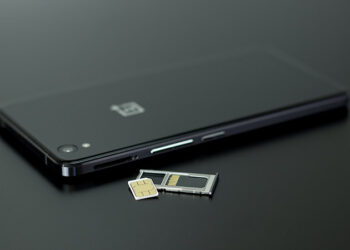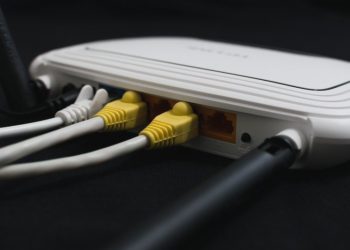Whether you are using a laptop, Apple MacBook, Google PC, or any other type of computer, you probably want it to be as fast as possible, right? We don’t know about you but we really appreciate our time and the last thing we want to waste it on is a slow computer. So, what makes a computer fast?
In today’s article, we will go into detail on what makes a computer fast. We will cover the parts that make a computer fast, which will depend on your understanding of the topic and help you get a better grasp of the following section, where we will have a closer look at ways and steps to take to speed up your computer.
We will also cover how to test the speed of your computer and what to do if you cannot speed your computer up yourself. We hope you are as excited as we are and are ready to learn all the ins and out of what makes a computer fast.
So, are you ready to dig deeper? Let’s do this.
Parts That Make a Computer Fast
Despite the fact that computers and the internal pieces of computers are getting smaller, this amazing piece of electronics still remains highly complex. As such, there is no single part of your computer that will make it fast, rather there are several parts that must be taken into account in order to get the fastest PC or laptop.
Below we will take a closer look at each part of the computer that contributes to its speed. Of course, some of these parts play a more important role than others when it comes to speed.
Processor (CPU)
The Central Processing Unit (CPU) is one of the most important parts that determine the speed of your computer. If your CPU is weak and slow, you will not be able to have a fast computer on your hands.
As the name of this part suggests, this is the part that is responsible for processing data – reading and executing program instructions. The speed at which a computer can do this is determined by its “clock speed.” So, the more instruction the CPU can process per second, the faster the computer will work.
Looking at the first computer, the Intel 4004, it was equipped with a processing speed of 740 kHz (kilohertz) and was capable of processing 92,000 instructions per second. These days’ computers come with multi-core GHz processors (a Giga (G) is 1,000,000x more than a kilo (k)), which means they actually have multiple CPUs. That fact enables them to execute multiple instructions simultaneously. Modern computers are as such capable of processing 100 billion instructions per second, which tells us that the speed has increased significantly. However, so has our demands, needs, and impatience with slow computers.
That said, if you want your computer to be fast, you absolutely need to make sure it has sufficient CPU for your needs. If you plan on using your laptop for basic stuff, such as internet browsing and text editing, a dual-core CPU should be enough. However, if you intend to play the latest games, work with HD or even 4K videos, or do some advanced engineering or designing work, you will want your computer to have 4 cores or more.
Cache
The cache is another important part that noticeably affects the speed of the computer. You now know that modern computers can execute as much as 100 billion instruction per second, however, the fastest CPU will be limited by other parts, mainly computer memory, both hard drive and RAM, which serve up those instructions.
The cache is responsible and used to transfer data between the CPU, memory, and all other components inside the computer. So, in order for the computer to be fast and run efficiently, you want it to have more cache.
If you are in need of a fast computer, you want to aim to have more level 2 and level 3 cache.
RAM
As mentioned above, there are two types of memory, hard drive, which we will cover later on, and RAM (Random Access Memory) also known as ‘Working memory’. As the name suggests, RAM is responsible for short-term data storage, which is used for storing working instructions and progress (t.i. working data). As such, you can surely conclude that the more RAM the better.
If your computer runs out of RAM, it needs to use the hard drive and send some of the data there. This adds two additional steps, plus the hard drive is much slower than RAM, which obviously slows down the processing speed.
The more RAM you have, the more programs you will be able to use simultaneously. Of course, some extremely demanding programs will such up all your RAM.
If you plan on multitasking with some advanced programs, you should aim to have at least 8GB of RAM, ideally 16GB.
Hard Drive
Hard drives are internal storage units of your computer and also affect the speed. Anytime some data needs to be stored on the hard drive or retrieved from it, it will depend on the type of hard drive. Traditional versions of hard drives, the hard drive disks (HDDs, have moving parts whose moving speed (revolutions per minute (RPM)) affects the speed of your computer. In that case, you want your HDDs to have the largest RPM.
However, if you want your computer to be as fast as possible, you’d need to consider modern computers with SSDs (solid-state drives), which don’t have moving parts as they use the flash memory and as such offer higher speeds.
Bus Speed
Bus speed is another aspect to consider when talking about what makes a computer fast. A bus is a circuit that connects all the different parts of the computer’s motherboard, including the CPU and memory. This means that the more data the bus can handle simultaneously the more efficient and thus faster your computer will work.
Bus speed is actually measured (in MHz) and usually refers to the FSB (t.i. front side bus). FSB speeds range from 66 MHz to 800MHz or more. To have the fastest possible computer on your hands, you want motherboards with the FSB speed to be as high as possible.
Video Card
The video card or GPU (t.i. Graphics processing unit) is another and final piece of the hardware parts in the ‘what makes a computer fast’ aspect. Whether you are using Google PC, Apple MacBook, or any other laptop, the GPU will play an important role speed-vise, especially when we consider graphically demanding tasks.
The GPU is an electronic circuit designed to quickly manipulate and alter memory to speed up the creation of images to be displayed on a screen. For gamers and graphic designers, a fast GPU is a must-have.
When it comes to the video card (a.k.a. graphic cards) they are either discrete (separate) or integrated. Discrete ones are typically a better choice as they have their own RAM, while integrated use the computer’s RAM.
When it comes to discrete graphics, there are many solid choices offered by two leading companies, Nvidia and AMD. If you want the best video cards, be prepared to pay quite a lot and aim for them to have 8GB of RAM or more.
Cooling System & Power supply
The cooling system and power supply are two additional aspects to consider. They are not directly affecting the computer’s speed, however, indirectly they play an important role and thus need to be mentioned here.
The more advanced equipment your computer packs the better the cooling system it requires. Since optimal temperature is essential for your computer to be as fast as possible, you may want to consider investing in it. You get to choose between the air cooling or water-cooling systems. There are some other options, but these are the most popular alternatives. Most laptops use air-cooling, however, if you are building an advanced gaming PC, using a water-cooling system may improve your computer’s performance and speed, but mainly prevent overheating.
Then we have a power supply; without it, your computer won’t be able to run. Make sure to use proper voltage and amperes for your adapter. In most cases, you will get original charging (in case of laptops) and power cords (in case of PC) that will do the necessary conversion. Thus, this is most important to consider by those building their own PCs from scratch. Improper power supply could damage your computer permanently and as such not only slow it down but break it completely.
Operating System
The operating system used with your computer is another important aspect that affects speed. The operating system is basically the software program that allows all of the computer hardware mentioned above to communicate and work alongside the computer software. It is what enables the computer to work as a whole and for you to interact with it. Without it, your computer won’t work.
The latest operating system for Windows is Windows 10. However, is you are an Apple MacBook user, you’ll be running Mac OS. You can also have the option of choosing Linux, Solaris, Fedora, Ubuntu, Chrome OS, and other less popular option.
When it comes to speed, it is important to make sure the operating system is regularly updated. Also, specific safety features can slow things down. So, if it makes sense to do research on what settings to use to make your operating systems most efficient and speedy.
Software
We came to the final stop – software. These are various programs that you will install on your computer, including games. Each of these has a great chance of slowing down your computer. Some pieces of software run in the background and are the ones that affect the speed the most. You want to make sure to delete the pieces of software that you do not use.
To get the highest possible speed, you also want to update your programs regularly. Also, visit the settings and adjust which programs you want to run automatically at startup.
Moreover, it is important that you use programs that meet your computer’s specs. Using a piece of software that is too demanding for your computer will slow it down immensely.
Ways to Make Your Computer Faster Now
Considering the fact that a very small amount of computers around the world are running at their most efficient speed, we decided to include this section, where you will learn what can you do to make your computer faster now.
Check Your Hard Disk Space
As a rule of thumb, you should make sure to keep at least 15% of your hard disk free for your computer to run optimally. If you have less than 15% free now, do some cleaning. If there is nothing you can delete, go purchase an external disc and move data from your computer.
There are also cleaning programs that may be used, however, manual hard disk check does the trick properly.
Close Unused Tabs
We don’t know about you, however, most users have a ton of tabs open at the same time. We understand that you are keeping your tabs open since you obviously intend to be getting to them, but remember that you can always bookmark those tabs and reopen them at the time. Moreover, most browsers have an option of restoring closed tabs, so you can simply close the entire window.
Remove Unnecessary Files
There are probably tons of files you do not use and never will on your computer. Moreover, there are many temporary files that were used in installation processes, caches, and cookies form the internet, which is all slowing down your machine.
You can get rid of those easily. On Mac, you will need to download CCleaner and use it to do the cleaning. On Windows, you can simply click Start > All Programs > Accessories > System Tools > Disk Cleanup.
Restart Your Computer
A pending computer restart can slow down your computer quite a bit. If this is due to your operating system pending update, you will be notified, however, the restart may be in order after most types of installations. Moreover, a restart may also stop certain processes that are actually no longer needed.
If you fill like your computer is slower than normal, restart it right away. As a rule of thumb, you shout shut down or restart your computer at least once per week to keep things running smoothly.
Backup Your Data
When you back up your data on external storage devices, you have the ability to free up space on your computer and thus contribute to the speed of it.
Uninstall Unnecessary Programs
Only very rare users are conscious of this aspect. Most just add and add and add various programs. Take some time every now and then to uninstall unnecessary programs. You’d be surprised how this simple action step can speed up your computer.
Mac: Uninstall manually by dragging apps into the trash. You can also download programs to help you sort and delete programs.
Windows: Go to Control Panel > Add or Remove Programs/Uninstall a Program. This will show a master list of all programs installed. For unfamiliar programs, right-click and choose Last Used On to see how frequently you use the program.
Prevent Unnecessary Programs from Starting
When you turn on your computer many programs start automatically. Some will run in the background without you even realizing it. Some of these are essential while there are often many that are not and are only slowing your computer down.
Mac: From the Apple Menu, go to System Preferences > Accounts > Login Items. Choose programs you’d like to prevent from opening automatically and click the minus sign (-) to remove them.
Windows: Open the Start Menu and run a search for “msconfig.” Choose Startup to see a list of all programs that run when you boot up your computer and uncheck anything unnecessary.
Check RAM and add More if Needed
You may be in need of more RAM. Most computers, even laptop models, let you upgrade RAM. There are ways to check your computer’s RAM usage. If you find it running out of it on regular basis, it might make sense to upgrade.
Mac: Open the Activity Monitor by selecting Library > Applications > Utilities and select System Memory. If the pie chart has mostly green and blue your RAM should be okay. If it is mostly red and yellow, you should consider installing additional RAM.
Windows: Initialize the Windows Task Manager by pressing Ctrl + Alt + Del. Select the Performance tab and find the area titled, Physical Memory (MB). If you find that the number next to Available is less than 25% of your total MB you should consider adding RAM.
Delete Internet Browsing History
You internet browser is automatically storing your browsing history (unless you are always in “incognito” mode). This takes up memory and potentially slows down your computer. As such, make sure to occasionally go to your browser’s history window (Show Full History) and then delete it.
Organize Desktop Icons
This action not only cleans up your desktop visually, but it can also cut down your computer’s RAM usage noticeably. The least you can do is to organize your icons into folders. That extra double-click won’t take much additional time, while you will help your RAM space as it will now need to load only those folders.
Resource Monitor to Check Memory
It makes sense to monitor your activity (resource monitor) as it will show you exactly which programs are taking up the most memory and using most of your CPU.
Mac: Visit Library > Applications > Utilities. Launch the Activity Monitor and select the % CPU column to see which programs are at the top. If anything is using over 50%, chances are that it is slowing down all over programs. Make your computer faster by deleting the application and using a faster alternative or ensure that all other programs are closed when using that application.
Windows: Go to Start Menu and then All Programs > Accessories > System Tools > Resource Monitor. Check the CPU Usage percentage, and click the Applications tab to view the applications using the most memory. Delete and replace application or ensure the application is only open when necessary.
Repair Disk Permissions
Having proper permissions set is quite important to avoid any problems that could also lead to slow computer performance. It is recommended to repair your disk permissions monthly to ensure all is running as smoothly as possible.
Remove Unused Languages
Operating systems and other pieces of software come with multi-language folders. To delete those is a simple way of freeing up some space on your computer.
Mac: Download MacFlyPro that detects and removes the localization files in both your OS and third-party apps. To use, launch, and go to the System Module. Then select the Cleanup section and hit Scan. You can then review the language files, making sure that the only files check-marked are unused macOS localizations and unused app languages. If you wish to erase all detected junk data (other than localization data including system/user cache and system/user logs) you can select Clean.
Windows: Open the Settings app > Time & Language > Language > Windows Display Language > Select the Language you want and set as the Default Language. Select Remove a language to free space on your Windows system.
Change Power Plan
It could be that your power plan settings are slowing your computer down. If you are focused on getting top speed, you should make sure your power plan is set for maximum performance.
Mac: Select the Apple icon in the top left-hand corner. Then choose System Preferences > Energy Saver. Check “Restart automatically if the computer freezes” and “Put the hard disk to sleep when possible” for improved computer usage.
Windows: Go to the Control Panel > Power Options. From there you can select your power to optimize performance. High performance is your best option for improving the speed and performance of your computer. Just be wary that this may take more power to use.
Test How Fast Your Computer is?
What gets measured gets improved. As such, it really makes sense to test how fast your computer is. By doing so, you will learn is all is running smoothly and you will also be able to determine what should your next steps be to make the necessary improvements in case that the speed is not at a level you’d want it to be.
How To Check What Your Computer Packs:
Mac:
- Click the Apple icon.
- Select About This Mac from the drop-down menu.
- Click the More Info button. Here you can find your processor type and speed, its amount of memory (or RAM), and your operating system.
Windows:
- Click Start.
- Select the Control Panel.
- Select System. Some users will have to select System and Security, and then select System from the next window.
- Select the General tab. Here you can find your processor type and speed, its amount of memory (or RAM), and your operating system.
How To Test Your Computer’s Performance:
Mac:
This requires you to install an app. Recommended: Novabench, CleanMyMac X, Cinebench, Geekbench, Blackmagic Disk Speed Test
- Launch the app.
- Click the Start Tests button. The app will start running different tests.
- Wait 1-2 minutes for the tests to run. …
- Get the results of each test along with the app score (the higher the number you’ve got, the better).
Windows:
- Launch Task Manager (Ctrl+Shift+Esc).
- Click “Performance”.
- Check the clock speed displayed under “Base speed”.
Note: To get advanced results, you can also use various pieces of software to test your Windows computer
After Doing That What To Do if The Computer is Not Fast Enough
If you have tested your computer and is too slow, move to the ‘Ways to Make Your Computer Faster Now’ section. If none of those action steps and suggestions are able to improve the speed of your computer, you will need to call a computer technician.
There may be something an expert will be able to do to improve the speed. However, you better prepare that it just might be time for you to upgrade to a new device, one that will be able to provide you with the speed you need.
If you are buying a new computer, you need to make sure to consider all your needs and user preference into account. You want your computer to run smoothly and fast at least with the tasks you are dealing with on daily basis. Life is just too short to be wasting it on a slow computer.
However, if you are in a financial crisis and cannot afford to upgrade, use this period to build up your patience, which is something a slow computer is great for.
FAQs
Does RAM or Processor make a computer fast?
Yes, both RAM and processor highly contribute to your computer speed. To get the best performance and the highest possible speed, you will need to ensure that both of these meet your requirements.
How much RAM do I need for gaming?
As you know, gaming is a broad term, however, if you want to play the latest games at above-average settings, you should aim to have 8GB. Moreover, RAM alone will not do the trick, you will also need to make sure your video card is good enough.
What is a good processor speed for a desktop?
Good processor speed is between 3.50 to 4.2 GHz.
Wrapping Up
We really hope you are not currently annoyed by a slow computer. If you are, make sure to apply the tips provided above to try and improve the speed. If your current computer is simply too old to keep up with your need, you will need to consider upgrading to a faster one. When doing so, makes sure to consider all the aspects of what makes a computer fast that we have covered in this article.
We believe in your capabilities to choose the best and fastest computer for your needs. Best of luck!






